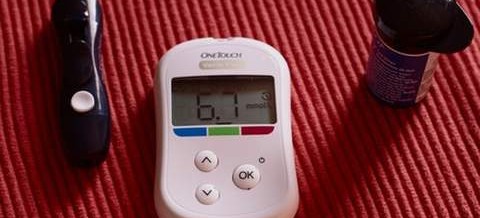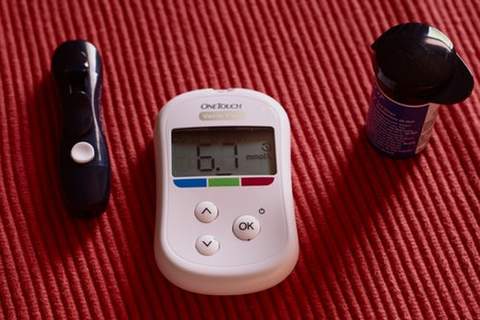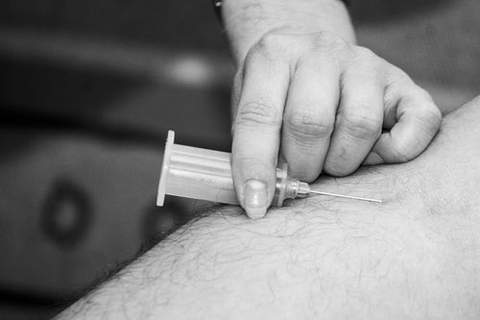
[ad_1]
Diabetes is a big buzzword that has really come out of the woodwork over the last decade. It is a disease that does not discriminate, affecting people all over the world. With 1 in 11 people estimated as living with some form of this disease, it is no wonder that people are looking for a diabetes cure.
While there is not a “cure-all” for diabetes, one of the best things you can do is to understand what it is and watch for signs of prediabetes. Keeping normal glucose levels is important, of course, but how do you do it? Arm yourself with knowledge – the power to understand and prevent diabetes – by reading on!
Why is Diabetes Such a Big Concern?
Unlike fatal epidemics like polio and tuberculosis, people can live with diabetes their whole lives. So why is it such a huge issue? According to Medical News Today, the rise of diabetes is “alarming,” with statistics rising throughout the world in people of all ages and ethnicities. We were able to get other diseases under control through vaccinations, but that does not work with diabetes.
There is no magic medicine or vaccine to prevent it. It requires knowledge of what causes diabetes, and then the self-discipline to follow through with what you have learned. If you know how to lower glucose and what other causes of this disease are, however, you are much closer to fixing the problem.
Who is at risk of developing diabetes?
Diabetes does not set boundaries based on age, location, wealth, or any other factors. It is a disease that anyone can end up with. Some types of diabetes are reversible, and others can be managed, but uncontrolled diabetes can be deadly.
Statistics of Diabetes
Research studies of over four million adults from 146 countries have shown that diabetes has become more prevalent worldwide, and the statistics are rising. In fact, the possibility of stopping this upward trend by 2025 is less than 1%. Between population growth and aging, diabetes has more than quadrupled since 1980, increasing faster in countries of low and middle income over countries of high income.
As of 2017, approximately 425 million adults aged 20 – 79 years were living with diabetes. By 2045, that number is estimated to be 629 million. This does not take into account people with juvenile diabetes. Most people with diabetes are between 40 and 59 years old.
Diabetes has been responsible for over four million deaths in 2017 alone, and cost over 727 billion dollars of health care money to treat. With statistics this astronomical, it is crucial that something is done to help educate people on how to prevent or manage diabetes.
General causes of diabetes
Since there are multiple variations of diabetes, there are different causes for each one, but each type has to do with the glucose levels and insulin that your body produces. Insulin is produced in your pancreas, but diabetes can affect all of the organs of your body if left untreated. There are risk factors involved with each type of diabetes that can help you prevent your body from getting this disease.
Potential effects of diabetes
Diabetes can start with minor symptoms of increased thirst and urination, and end with symptoms as severe as death. Symptoms of diabetes can include increased hunger, fatigue, blurred vision, numbness and tingling in the extremities, non-healing sores and wounds, and unexplained weight loss. It is important to know that these are not the only symptoms of diabetes, however, and regular check-ups with your doctor are important to monitor your body to try to catch it before you end up with full-blown diabetes.
What Are the Types of Diabetes, Exactly?
Diabetes, in general, is defined as “a chronic disease in which the body either cannot produce insulin or cannot properly use the insulin it produces.” This can occur in a multitude of ways for different reasons, resulting in different forms of diabetes.
Diabetes Mellitus Type I
Type 1 diabetes, also called juvenile diabetes, is a less common form of diabetes that happens when your body’s immune system confuses the beta cells that produce insulin with a threat and attacks them. Because of this, your pancreas slows down or stops producing insulin. Although it is less common than diabetes mellitus type II, there are still over 200,000 cases of type I diagnosed per year.
This type of diabetes can be helped with treatment, but so far, it can’t be cured. Typically appearing in adolescence, type 1 diabetes symptoms include increased thirst, blurred vision, frequent urination, hunger and excessive fatigue. Treatment for this disease focuses on maintaining normal blood glucose levels with exercise, insulin therapy and diet.

Diabetes Mellitus Type II
An extremely common disease, one in three people are at risk of developing diabetes mellitus type 2. There are more than three million cases diagnosed every year. Diabetes, if caught early, is treatable by a medical physician but can be chronic, lasting years or even an entire lifetime.
In this type of diabetes, the body does not produce enough insulin, requiring treatment that can consist of diet, medication, natural blood glucose control approach, and insulin therapy. Symptoms of type 2 diabetes can include lack of energy, extreme fatigue, excessive thirst and dry mouth, blurred vision, slow healing wounds, fungal infections that occur in the skin repeatedly, and tingling or numbness in the hands and feet.
Many people ask if diabetes type 2 is reversible, or if type 2 diabetes can be cured, and studies show that it can be. This requires consistent changes in the person’s lifestyle, including their exercise and eating habits.
Diabetes Insipidus
Diabetes Insipidus is very rare and is actually not related to the insulin form of diabetes because it is not related to blood glucose levels – it is actually a hormone deficiency. This disease occurs when the body can’t control how it regulates fluids because the pituitary hormone, vasopressin, is impaired. An abundance of the production of dilute urine then takes place because the kidneys can’t balance the fluid that is in the body. Symptoms of this can be dehydration and insatiable thirst, as well as frequent urinary urgency or bed wetting.
Adults aged 41 and older are most affected, but people of any age can be at risk. However, there are less than 20,000 cases in the world documented each year. Diabetes insipidus can be chronic or life-long.
Medical professionals can treat diabetes insipidus with hormone therapy, low-salt diets, and monitoring of daily water intake.
Gestational Diabetes
Developing during gestation – pregnancy, – this type of diabetes affects how your cells use glucose in your body. It can cause high blood sugar, affecting the mother’s and the baby’s health.

Symptoms of gestational diabetes are usually not observed. However, testing for it is part of regular prenatal health care. Usually, your blood sugar returns to normal after delivery, but during the pregnancy, a specialist will likely monitor you and guide you on natural ways to regulate your blood glucose levels.
Causes of gestational diabetes are unknown, but it usually develops in the last half of pregnancy, after the 20th week. Hormones that are produced during pregnancy can impair how insulin acts in your body, which can raise your blood glucose levels. An overabundance of these hormones, or any one of them, can be what causes gestational diabetes, but how it occurs is still unknown.
There are some risk factors that put women at greater risk. These can include age (greater than 25), – family history of diabetes, personal health issues, obesity (BMI of 30 or higher), and race (non-whites are at higher risk).
Prediabetes
Prediabetes is considered the “wake up call” to those on the verge of developing full-blown diabetes mellitus type 2. In most cases, people with prediabetes have a higher than normal blood glucose level that is not quite in the diabetes range yet. The body does not produce enough insulin or does not respond correctly to the insulin it is producing. Untreated prediabetes makes you more susceptible to heart attacks or strokes and eventually will turn into diabetes itself.
Over 86 million Americans are currently diagnosed with this wake-up call, and it can be diagnosed with a prediabetes test. These tests include the fasting plasma glucose test, oral glucose tolerance test, and the hemoglobin A1C test. Each of these tests has a range in which your blood sugar will fall, showing if your glucose is normal, low or high. High levels that are not in the diabetic range yet show that you may have prediabetes. However, this problem is fixable, and you can easily learn how to reverse prediabetes.

Risk Factors of Prediabetes
Even though there are no real boundaries that guarantee you will not get diabetes, there are some factors that put you more at risk of developing prediabetes or worse. Knowing these risk factors can help you watch for signs so you can catch it early enough to reverse prediabetes.
- Age – Prediabetes can occur at any age, but it tends to be more common in people over age 45. This can be for multiple reasons; the most likely being the tendency to get less exercise and gain weight as we get older. It is harder to lose weight as we age, our joints and bones start to lose strength and our muscles can atrophy. Because of all of this, it is imperative that we work even harder to keep our bodies healthy as we age.
- Inactivity – Exercise really is powerful. The more physical activity you have, the more you use up your extra stores of glucose as energy and control your weight and sugar levels. The right kind and amount of exercise can also help avoid muscle atrophy and keep our bodies operating at peak performance.

- Race – Research has shown that people of certain races are more predisposed to developing prediabetes, although the reasons behind it are unclear. Hispanics, African-Americans, Asian-American and Pacific Islanders are more at risk than those of other races. This does not mean those of other races are in the clear – everyone should monitor their bodies for symptoms of prediabetes.
- Weight – There are many reasons why being overweight is unhealthy, but in the case of developing diabetes it is because excess fatty tissue makes your cells become resistant to insulin. This is particularly true for people with disproportionately large waists. Men with a waist size greater than 40 inches and women with waists larger than 35 inches are more at risk of prediabetes.
- Genetics – In some cases, no matter how healthy you are, you may develop prediabetes if you have a strong family history of relatives with the disease. It can be passed on genetically, but knowing that you are at risk gives you a greater chance of preventing or controlling the disease.
- Other Factors – Other lifestyle issues, such as not getting enough sleep, can increase your risk of prediabetes as well. Those who suffer from sleep apnea, work night shifts or work changing shifts where sleep is not consistent or on the natural circadian rhythm patterns may have problems with insulin resistance as well. How you eat plays a large factor in your risk of developing diabetes as well, so switching your unhealthy meals with natural glucose control meal replacements can help you prevent or control prediabetes. Talk to your physician about a meal plan that is right for you and can include and help control any other medical issues you may have.
Prediabetes Symptoms
With prediabetes, there are often no symptoms. This is why knowing the risk factors and what puts you in the danger zone is very important. However, there are some warning signs that you and your physician can watch for to be sure you catch your body before it turns into full-blown diabetes.
Warning signs: The warning signs can quietly sneak up on you. Watch for darkened skin on your armpits, neck, knees, knuckles, and elbows. Excessive thirst and frequent urination, increased fatigue or blurred vision may be signs that you have missed prediabetes and are at the beginning of type 2 diabetes mellitus.
Medical diagnoses: Regular annual checkups with your physician, even if you do not classify yourself as ill, are important to watch for changes in your body that you may not realize are going on. With an early enough diagnosis, you may be able to completely reverse prediabetes.
Your doctor will likely check your A1C (blood sugar measurement) or FPG (fasting plasma glucose) to watch for increases in your body’s ability to control your blood sugar. If you are not receiving blood tests annually, you should strongly consider finding a general physician who can help you stay healthy and watch for any medical concerns before they are out of control. It’s a fact of life – no one stays completely healthy forever.
How to Reverse Prediabetes Symptoms Naturally
If you are diagnosed with prediabetes at your doctor’s office, don’t panic! There are many natural prediabetes treatments available and your doctor will be able to guide you on how to lower glucose levels in your body. Things that you can do at home to help your prediabetes glucose levels include changing your daily habits and finding natural ways to move your body into normal glucose levels.

- Setting a weight loss goal or weight maintenance routine is important to control your cells’ resistance to insulin. Losing 5% of your current weight is a good starting point if you are overweight.
- Eating healthier is a huge way to help you not only lose weight but optimize your body’s performance and overall health. Your body requires certain vitamins and minerals to process food, store fat, eliminate toxins, create new and healthy cells, and more. Every aspect of your physical body relies on what you do it and what you ingest to perform its duty. Choose what you do to your body and allow into your body carefully.

- Getting more physical activity should be a priority for you as well. This doesn’t have to include “exercise” as you may think of it – going to the gym, workout videos at home, etc., although these are excellent ways to accomplish this goal. If that isn’t possible for you right now, just try to move around more. Park a little further away in the parking lots, take the stairs instead of the elevator when you can, or go for a neighborhood walk. Work your way up to more, but just move.

- Get support. Don’t try to do it alone. Studies have proven that people who have support are more successful at accomplishing lifestyle changes, and this is a big one. Talk to your healthcare provider, your friends, and your family and develop a support group or join one to help you meet your goals and keep accountability. Track your progress, also. This will help your momentum continue.
- Find natural prediabetes treatments – There are many ways to change what you are ingesting to promote the natural reversal of prediabetes. Increasing your water intake will help you to clear your body of toxins, improve your systems’ functions, and keep you feeling fuller longer. Change your dairy to low-fat or non-fat, but don’t eliminate it completely. Eat fruits and whole wheat for your fiber needs, since fiber is an excellent way to lower glucose levels. Eliminate sodas, sports drinks, energy drinks, and imitation fruit juices. Replace one meal a day with an all-inclusive meal replacement to ensure you are getting all of the vitamins and nutrients that you need.
Prediabetes Does Not Have to Last a Lifetime
A diagnosis of prediabetes can be the best thing that you hear from your doctor. It means you caught your body before it entered the full-blown stages of diabetes 2, and you can fix it.
Natural diabetes treatments and daily habit changes can help you reverse prediabetes and put you on track to a much healthier, happier lifestyle. Know your risk factors and warning signs, get regular medical check-ups and set your daily and future goals to ensure you avoid diabetes throughout your life.
Source link
MAR
2019
